Potřebujeme váš souhlas k využití jednotlivých dat, aby se vám mimo jiné mohly ukazovat informace týkající se vašich zájmů. Souhlas udělíte kliknutím na tlačítko „OK“.
ASTM E317-11
Standard Practice for Evaluating Performance Characteristics of Ultrasonic Pulse-Echo Testing Instruments and Systems without the Use of Electronic Measurement Instruments
Automaticky přeložený název:
Standardní praxe pro hodnocení funkční vlastnosti ultrazvuku-Echo testovacích přístrojů a systémů, bez použití elektronických měřicích přístrojů
NORMA vydána dne 1.8.2011
Informace o normě:
Označení normy: ASTM E317-11
Poznámka: NEPLATNÁ
Datum vydání normy: 1.8.2011
Kód zboží: NS-46390
Počet stran: 13
Přibližná hmotnost: 39 g (0.09 liber)
Země: Americká technická norma
Kategorie: Technické normy ASTM
Kategorie - podobné normy:
Anotace textu normy ASTM E317-11 :
Keywords:
evaluation of pulse-echo examination systems, evaluation of ultrasonic pulse-echo instruments, nondestructive testing, performance characteristics of ultrasonic examination instruments, performance characteristics of ultrasonic examination systems, pulse-echo examination instruments, pulse-echo examination systems, ultrasonic examination instruments, ultrasonic examination systems: Ultrasonic testing, ICS Number Code 19.100 (Non-destructive testing)
Doplňující informace
| Significance and Use | ||||||||||||
|
This practice describes procedures applicable to both shop and field conditions. More comprehensive or precise measurements of the characteristics of complete systems and their components will generally require laboratory techniques and electronic equipment such as oscilloscopes and signal generators. Substitution of these methods is not precluded where appropriate; however, their usage is not within the scope of this practice. This document does not establish system acceptance limits, nor is it intended as a comprehensive equipment specification. While several important characteristics are included, others of possible significance in some applications are not covered. Since the parameters to be evaluated and the applicable test conditions must be specified, this practice shall be prescribed only by those familiar with ultrasonic NDT technology and the required tests shall be performed either by such a qualified person or under his supervision. Implementation may require more detailed procedural instructions in the format of the using facility. In the case of evaluation of a complete system selection of the specific tests to be made should be done cautiously; if the related parameters are not critical in the intended application, then their inclusion may be unjustified. For example, vertical linearity may be irrelevant for a go/no-go test with a flaw gate alarm, while horizontal linearity might be required only for accurate flaw-depth or thickness measurement from the display screen. No frequency of system evaluation or calibration is recommended or implied. This is the prerogative of the using parties and is dependent on application, environment, and stability of equipment. Certain sections are applicable only to instruments having receiver gain controls calibrated in decibels (dB). While these may sometimes be designated “gain,” “attenuator,” or “sensitivity” on various instruments, the term “gain controls” will be used in this practice in referring to those which specifically control instrument receiver gain but not including reject, electronic distance-amplitude compensation, or automatic gain control. These procedures can generally be applied to any combination of instrument and search unit of the commonly used types and frequencies, and to most straight-beam examination, either contact or immersed. Certain sections are also compatible with angle-beam, wheel, delay-line, and dual-search unit techniques. Their use, however, should be mutually agreed upon and so identified in the test report. The validity of the results obtained will depend on the precision of the instrument display readings. This is assumed to be ±0.04 in. (±1 mm), yielding between 1 % and 2 % of full scale (fs) readability for available instrumentation having suitable screen graticules and display sharpness. |
||||||||||||
| 1. Scope | ||||||||||||
|
1.1 This practice describes procedures for evaluating the following performance characteristics of ultrasonic pulse-echo examination instruments and systems: Horizontal Limit and Linearity; Vertical Limit and Linearity; Resolution - Entry Surface and Far Surface; Sensitivity and Noise; Accuracy of Calibrated Gain Controls. Evaluation of these characteristics is intended to be used for comparing instruments and systems or, by periodic repetition, for detecting long-term changes in the characteristics of a given instrument or system that may be indicative of impending failure, and which, if beyond certain limits, will require corrective maintenance. Instrument characteristics measured in accordance with this practice are expressed in terms that relate to their potential usefulness for ultrasonic testing. Instrument characteristics expressed in purely electronic terms may be measured as described in E1324. 1.2 Ultrasonic examination systems using pulsed-wave trains and A-scan presentation (rf or video) may be evaluated. 1.3 The procedures are applicable to shop or field conditions; additional electronic measurement instrumentation is not required. 1.4 This practice establishes no performance limits for examination systems; if such acceptance criteria are required, these must be specified by the using parties. Where acceptance criteria are implied herein they are for example only and are subject to more or less restrictive limits imposed by customer's and end user's controlling documents. 1.5 The specific parameters to be evaluated, conditions and frequency of test, and report data required, must also be determined by the user. 1.6 This practice may be used for the evaluation of a complete examination system, including search unit, instrument, interconnections, fixtures and connected alarm and auxiliary devices, primarily in cases where such a system is used repetitively without change or substitution. This practice is not intended to be used as a substitute for calibration or standardization of an instrument or system to inspect any given material. There are limitations to the use of standard reference blocks for that purpose. 1.7 Required test apparatus includes selected test blocks and a precision external attenuator (where specified) in addition to the instrument or system to be evaluated. 1.8 Precautions relating to the applicability of the procedures and interpretation of the results are included. 1.9 Alternate procedures, such as examples described in this document, or others, may only be used with customer approval. 1.10 Units—The values stated in inch-pound units are to be regarded as standard. The values given in parentheses are mathematical conversions to SI units that are provided for information only and are not considered standard. 1.11 This standard does not purport to address all of the safety concerns, if any, associated with its use. It is the responsibility of the user of this standard to establish appropriate safety and health practices and determine the applicability of regulatory limitations prior to use. |
||||||||||||
| 2. Referenced Documents | ||||||||||||
|
Podobné normy:
Historická
1.7.2011
Historická
15.1.2013
Historická
15.12.2011
Historická
1.6.2009
Historická
15.6.2010
Historická
15.6.2012
Odebírejte informace o nově vydaných normách ZDARMA:
Chcete pravidelně odebírat informace o nově vycházejících normách z celého světa a to zcela zdarma?
Přihlašte se k odběru. Vše je velice jednoduché a absolutně ZDARMA.
Na výběr máte vydavatele z celého světa.


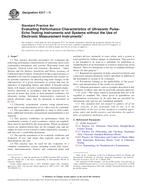
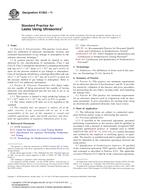 ASTM E1002-11
ASTM E1002-11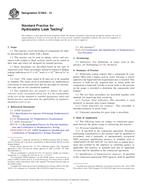 ASTM E1003-13
ASTM E1003-13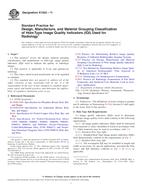 ASTM E1025-11
ASTM E1025-11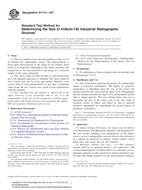 ASTM E1114-09e1
ASTM E1114-09e1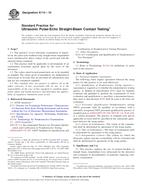 ASTM E114-10
ASTM E114-10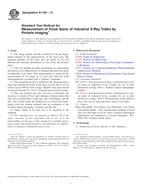 ASTM E1165-12
ASTM E1165-12
 Cookies
Cookies
